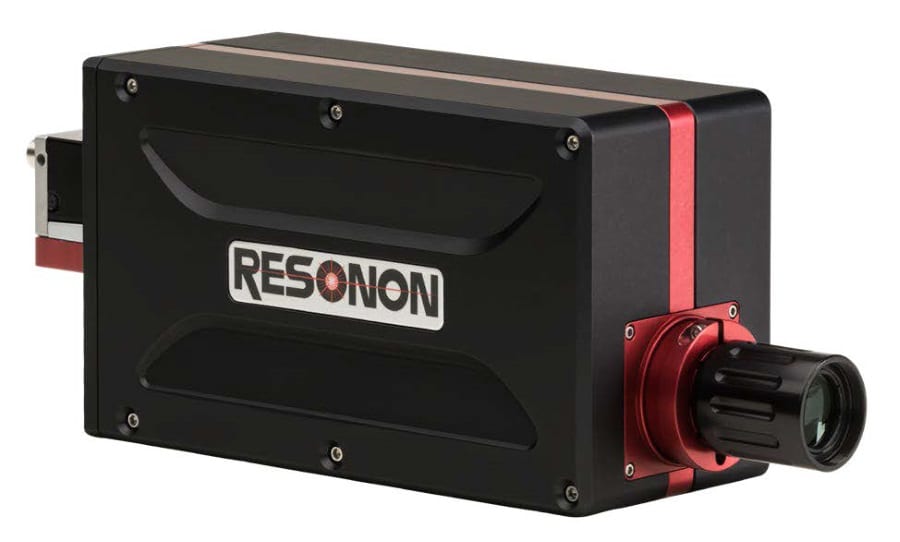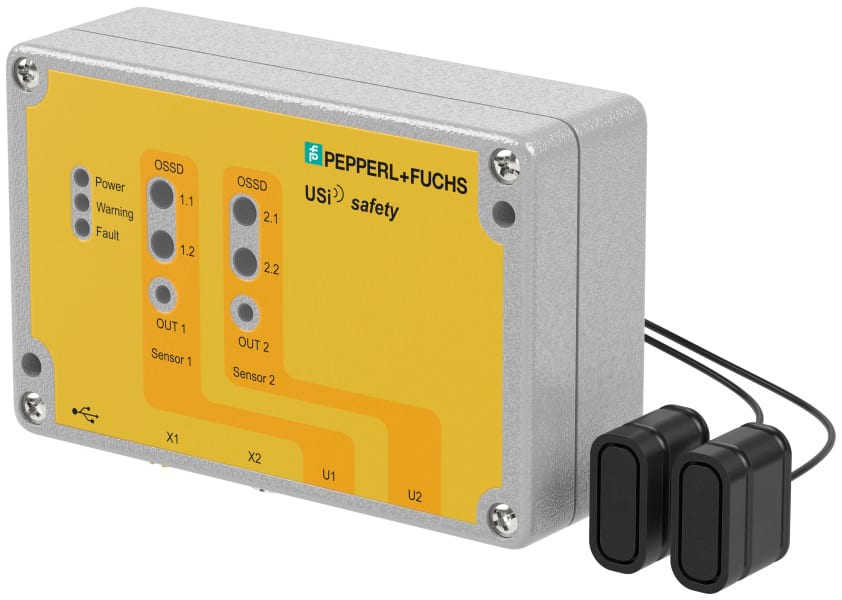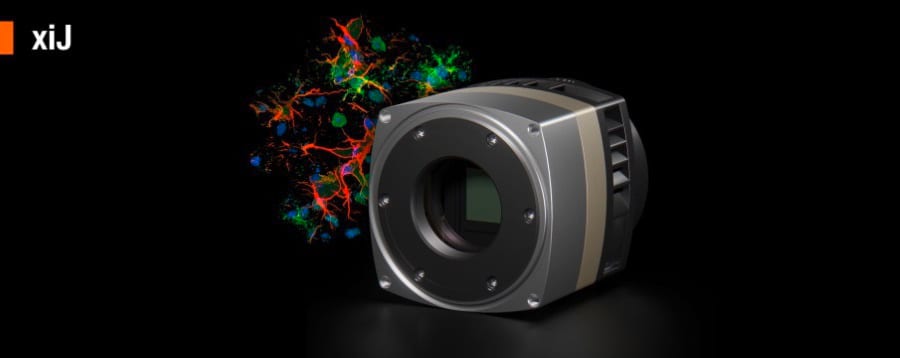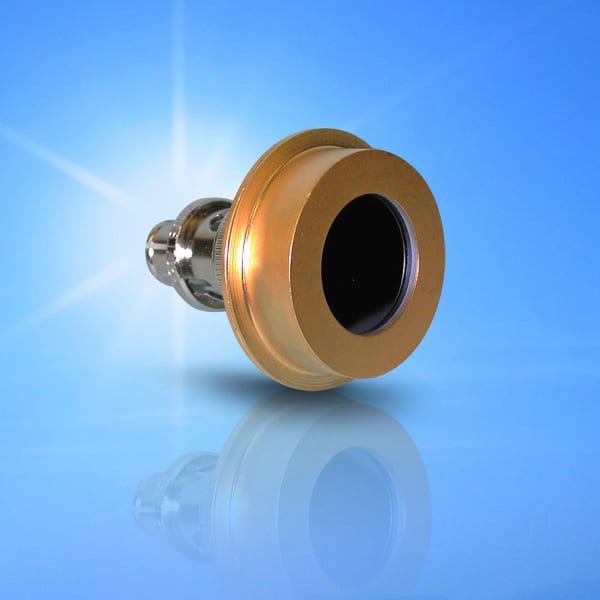Products
the latest products to help you improve your manufacturing process

Nikon Metrology Industrial Microfocus X-ray CT Inspection Solutions
When using X-ray CT (computed tomography) for non-destructive quality control of larger components like aluminum castings or battery modules for electrical vehicles, the challenge is to shorten inspection cycle times without compromising resolution. One prerequisite for achieving this is high X-ray intensity, or flux.
In Nikon Metrology’s range of X-ray CT systems, a rotating target can already triple the flux for a given focal spot size and the flux can be further increased by motorized FID (focal spot to imager distance), which brings the detector closer to the source at the push of a button.
With the release of a new offset CT reconstruction algorithm in the latest version of the manufacturer’s Inspect-X software, not only can larger components be scanned but it can also be performed at higher geometric magnification. The Offset.CT module is available on all Nikon Metrology X-ray CT systems from 180kV through to 450kV.
With this combination of the latest Rotating.Target 2.0, adjustable FID and Offset.CT, cycle times are significantly reduced, and better resolution is achieved, even when processing large and complex components.
Offset.CT is a scanning method that allows small or large components to be inspected fully while only part of the sample is within the field of view (FOV) during rotation. The component is placed such that only just over half of the object lies within the X-ray cone beam, allowing a much wider FOV and reconstruction volume.
Compared with traditional CT, this has two main benefits for component inspection. First, larger components, even those wider than the detector itself, can be scanned without having to use a larger CT machine. Secondly, it allows the component to be placed much closer to the X-ray source, allowing higher magnification and therefore significantly increased voxel resolution. Consequently, a broader range of sample sizes can be scanned at high resolution.
It is therefore easier to perform a wide range of critical inspection tasks including identification of small internal defects, measuring features in the interior of complex components, or detecting deviations from a nominal CAD model, even when dealing with large components.
Adjustable FID is a standard feature in Nikon Metrology 225kV XT H systems and Large Envelope CT systems up to 450kV. The benefit of shortening the distance between the source and the detector using motorized FID functionality is that the X-ray flux is increased. It serves to improve the signal-to-noise (SNR) ratio and the image quality of digital radiographs and 3D voxel data, in addition to allowing increased scanning speed.
Nikon Metrology's Rotating.Target 2.0 is able to generate X-rays that are three times more powerful for a given microfocus spot size, without reducing image resolution. Scan times are consequently shorter and/or denser samples can be penetrated. Rotating.Target 2.0 features a maximum voltage of 225kV and a maximum power of 450W, but for larger and denser components a microfocus 450kV rotating target X-ray source is available.
The combination of the three features, Rotating.Target 2.0, motorized adjustable FID and Offset.CT, which is not offered by any other supplier, makes it possible for a user to find the perfect balance between scan speed and resolution when implementing X-ray CT for quality control in automotive plants and their supply chains, as well as in other manufacturing industries.
Bigger parts having complex geometry, such as castings and additively manufactured components, some of which have become much larger in recent years, benefit in particular from industrial X-ray CT solutions from Nikon Metrology. Inspection of battery modules for electric vehicles, in which individual battery cells requiring high resolution imaging are encapsulated in a larger protective unit, is a particularly good fit for the inspection technique.
The 3D data acquired by these CT systems can help save costs, reduce scrap, and decrease failure rates throughout the lifecycle of a product. This applies in the product development phase as well as the pre-series phase, where parts are scanned to optimize production parameters. Moreover, the solutions are able to deliver these benefits at scale, supporting series inspection in the production environment for improved process control.
Nikon Metrology, Inc.
www.nikonmetrology.com
Resonon Ultraviolet Hyperspectral Camera
Resonon, a leader in hyperspectral imaging, has just released the Pika NUV2, an ultraviolet plus visible hyperspectral camera available commercially. The Pika NUV2 will be an essential tool for advanced research, industrial vision systems, remote sensing, and many other hyperspectral imaging applications.

The Pika NUV2 is a line scan imaging spectrometer that scans a spectral range of 330 – 800 nm. It can be used in Resonon’s benchtop, outdoor, airborne, and machine vision systems, and is available now.
Human vision spans a spectral range of 400 – 700 nm; wavelengths below 400 nm are considered ultraviolet. Birds and insects can see ultraviolet light, flowers and plants often have noteworthy ultraviolet features, and solar illumination extends down to about 300 nm at the Earth’s surface. Furthermore, pharmaceuticals and other industrial products can possess unique ultraviolet signatures which the NUV2 can quantify for sorting or quality control purposes.
Most glass materials that comprise optical lenses do not transmit light below about 350 nm.
Over a spectral range of 330 – 800 nm the Pika NUV2 provides 255 contiguous spectral channels at each pixel, and each spectral channel is 1.84 nm wide. The spectral resolution (FWHM) is 3.2 nm. Each camera frame is an image line that has 1500 spatial pixels.
Resonon
www.resonon.com

Pepperl+Fuchs Ultrasonic Sensors for Safety Applications
Pepperl+Fuchs is expanding its factory automation portfolio with the all-new USi-safety ultrasonic sensor. Suitable for use in harsh environments and even for outdoor applications, this small but mighty sensor requires only a small amount of installation space.
The USi-safety is a 2-channel ultrasonic sensor, featuring two transducers connected to a control interface. On each of the two independent channels, objects can be detected via an elliptical sound beam within ranges of up to 2500 mm. Two safe OSSD outputs are provided for signal output.
Due to the special “wide and shallow” shape of the detection field, the system can be successfully used just above the floor or close to a wall. Perfected for monitoring in three-dimensional space, the optimal protection of machines, vehicles, and persons is therefore ensured. This is made possible by the special shape of the sound beam: while conventional ultrasonic sensors emit acoustic signals in the form of a radially symmetrical sound beam, the USi-safety does so in an elliptical sound field. Due to the opening angle of ± 17°/± 5°, a particularly wide detection range is generated in one plane and a narrow detection range in the other plane.
The USi-safety joins the existing Pepperl+Fuchs safety portfolio, which includes inductive safety sensors, photoelectric sensors, and light grids, safe positioning systems, safety-related AS-Interface components, and many different explosion-protected interface modules.
Application Examples:
- Reliably preventing collisions involving driverless forklifts
- Machine safeguarding in the wood industry
- Personal safety in lane-guided AGVs
Pepperl+Fuchs
www.pepperl-fuchs.com
Ximea sCMOS xiJ Camera Family
Continuous progress in scientific fields places ever-higher demands on the tools used in various research application areas. To meet these increased requirements Ximea has integrated the newest technologies improving the parameters important for the scientific community. This progress started with the introduction of the newest Scientific CMOS (sCMOS) sensors by Gpixel company, assembled mainly under GSENSE family.

The Ximea team chose to start with models based on GSENSE5130, GSENSE400, GSENSE6060 and especially GSENSE2020 including the BSI versions.
The main distinguishing features of the sCMOS sensors are their Dynamic range of up to 90 dB and exceptionally low noise down to 1 e-. With the BSI or Backside illuminated versions the sensor gets an additional boost in the Quantum efficiency in certain cases reaching 95% sensitivity. Present is also the HDR mode where for each pixel Low and High gain channels are readout with two 12 bit ADC samples resulting in merged 16 bit. This further allows to optimize the image quality output, either for the lowest noise or highest Full well capacity, saturation and other parameters.
To provide flexibility, Ximea designed several camera versions for each sensor with some focused on the full speed potential and some on ultimate image properties. This was the reason to offer the cameras with Thermoelectric Peltier cooling or with a fast interface represented by the PCIe able to reach 20 Gbit/s and more. Therefore, the models with high speed are oriented on Global shutter mode and models meant for low noise are optimized for the Rolling shutter.
The cooled models are ideal for low light applications reducing dark noise during long exposure times, whereas PCIe models are perfect for rapid process capturing.
Ximea
http://www.ximea.com

Advanced Photonix Large Area Avalanche Photodiodes
Advanced Photonix, a division of OSI Optoelectronics, introduced compact and rugged Large Area Avalanche Photodiodes (LAAPDs). The new LAAPDs are available in various sizes, from 3 mm, 5 mm, 10 mm, to 16 mm active area diameters. The devices operate at up to 2000 volts with gains of up to 300. With extremely low noise levels and high stable gain, the photodiodes are offered in cooled or uncooled packages.
The large area avalanche photodiodes are available with high sensitivity in Blue, Red, or Deep UV spectral regions down to 150 nm with 120% quantum efficiency. They are ideal for scintillation or direct X-ray detection applications.
Advanced Photonix
https://www.advancedphotonix.com/product/detectors/avalanche-photodiodes/
Ensenso S10 3D Camera
The Ensenso S10 is equipped with a 1.6 MP Sony sensor and operates on a laser-based 3D process. A narrowband infrared laser projector creates a high-contrast dot pattern – even on objects with difficult surfaces or in low-light environments. The camera's laser point triangulation is accelerated by a neural network and enables reliable mapping of the captured pattern points to the hard-coded positions of the projection. This results in robust and geometrically precise 3D data with high depth accuracy. At object distances of 50 cm, the maximum deviation is only 0.6 mm. At full projector power, the Ensenso S10 3D system achieves up to 20 point clouds per second with consistently high quality and resolution.

With a rugged zinc die-cast housing, a 60° field of view and a working range of 0.5 to 3 meters, the 3D camera can be used universally and is suitable for industrial applications with high cost efficiency. Combined with the flexibility of the Ensenso SDK, it is also quickly and easily integrated into many applications where, for example, variant objects need to be safely gripped in large numbers or obstacles need to be detected for collision-free movements of robots and UAVs. The Ensenso S10 is also at home in logistics automation as well as in robotics or in the agricultural sector. Especially high-volume and price-sensitive projects can now benefit from 3D image processing in industrial quality.
IDS Imaging
https://en.ids-imaging.com/ensenso-3d-camera-s-series.html

JAI Go-X Series With New Rolling Shutter Cameras
JAI has expanded its Go-X Series of small industrial cameras with three additional models. The new models are built around Sony´s popular STARVIS sensor platform featuring CMOS rolling shutter technology and includes 6.3-megapixel (IMX178), 12.2-megapixel (IMX226) and 20-megapixel (IMX183) resolutions, all available in monochrome and color versions.
The sensor design utilizes back-side illumination technology featuring a simpler and more compact pixel architecture leading to excellent light sensitivity and high quantum efficiency. The new cameras include a global reset function that lets users combine the advantages of global and rolling shutter in applications where flash illumination can be used. With their attractive price point, these new rolling shutter cameras are ideal in vision systems where cost-efficiency is a key system design parameter.
With small industrial cameras being utilized more and more in vision systems monitoring critical factory manufacturing, warehousing and robotics operations, the cameras in the Go-X Series feature high shock and vibration ratings of 80G and 10G, respectively, and are designed to optimally dissipate heat to avoid breakdowns in typical industrial environments and under nonstop operating conditions. The high reliability of the cameras is backed by a full six-year warranty.
In addition to providing high manufacturing quality, the new cameras–in line with other Go-X Series models–are designed to provide higher image quality, thanks to a rigorous dust prevention and screening process. The special dust prevention measures include cleanroom assembly, internal seals around the sensor compartment, and a rigorous screening process to ensure every camera shipped delivers the best possible image quality via a clean, dust-free optical path.
The new rolling shutter models share many of the same features as the rest of the Go-X Series cameras including, standard C-mount, region-of-interest (ROI), image flipping and mirroring, blemish compensation and shading correction–plus, an automatic level control function (ALC) that lets users define the interactions between auto-gain and auto-shutter operation to minimize noise and optimize apertures in dynamic lighting conditions. Power can be provided over the GigE Vision interface or via a separate 6-pin I/O connector.
Weighing only 65 grams and with 29 mm x 29 mm x 51.5 mm dimensions, the new cameras are suitable for a wide range of applications in factory manufacturing lines with tight spaces or in applications involving robotic arms, drones, or other scenarios where portability is a key requirement.
JAI
https://insights.jai.com/go-x-series
Scroll Down
Scroll Down
